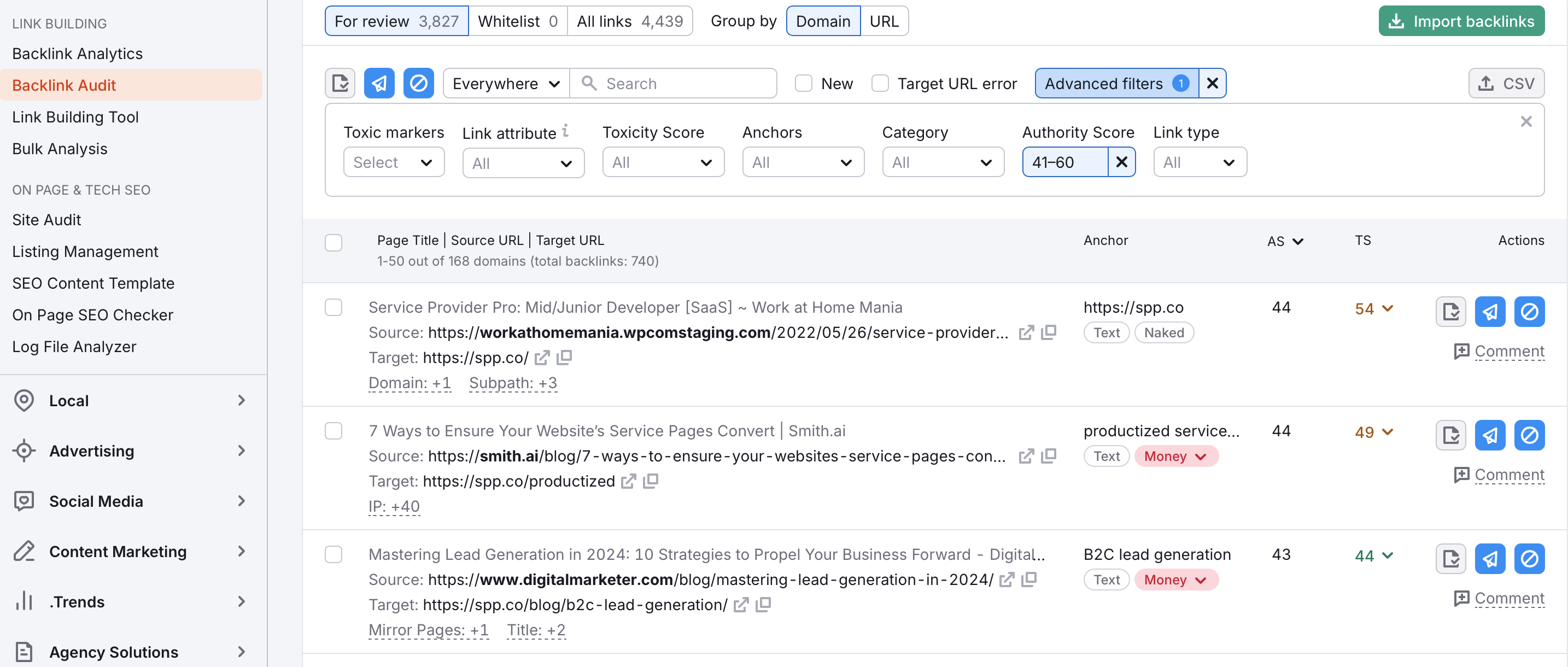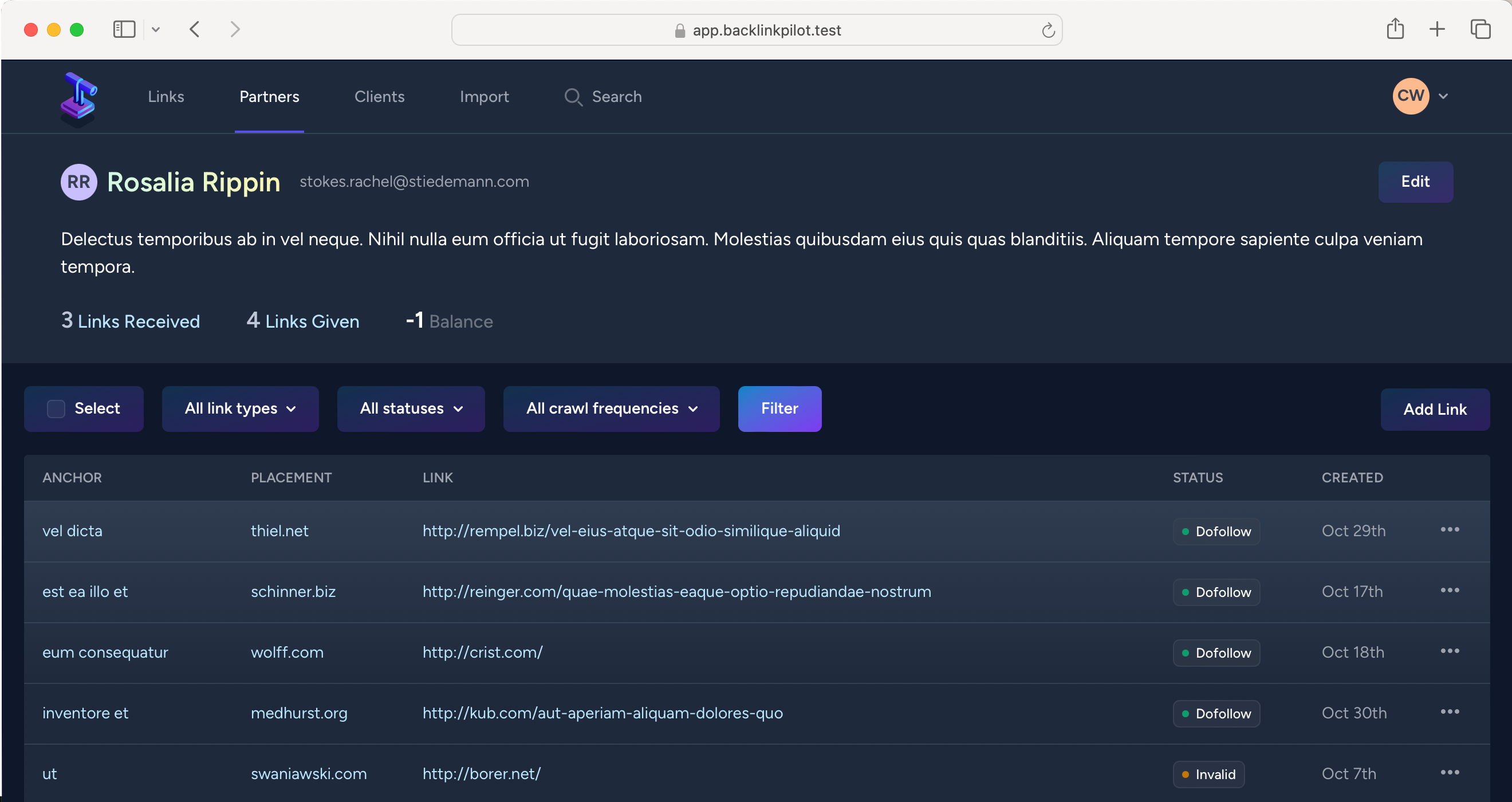In the world of online visibility, there’s a secret weapon that separates the digital champions from the rest. It’s not flashy content. It’s not keyword stuffing. It’s the art of backlink management.
But here’s the kicker: most website owners are doing it wrong.
They’re chasing quantity over quality, falling for cheap tricks, wondering why their rankings are stuck. Meanwhile, their savvier competitors are quietly building empires on the back of strategic backlink partnerships.
So, how do you build a backlink profile that doesn’t just impress search engines, but actually drives real, human traffic to your site?
That’s exactly what we’re about to uncover. We’re Amalya and Deian, both experts at building links. In this guide, we’ll reveal some secrets and tell you how you can manage your backlinks successfully.
What is a backlink in SEO?
Before we dive into the art of backlink management, let’s answer something else first: what exactly is a backlink?
The name already gives it away: it’s a link that someone gives to your site. It can be a link to the homepage, a marketing page, an infographic, or a blog post.
With that said, not all backlinks are created equal.
- Editorial links: These are the gold standard. Natural editorial links occur when someone else includes a link to your page in their content without you needing to ask. This usually happens when your content is seen as valuable or authoritative.
- Manual link building: These links are acquired through deliberate efforts, usually your internal link build team, or if you outsource the task to link building agencies.
- Self-created links: These are backlinks you create yourself, usually by adding your link to places like forums, blog comments, or online directories.
What is backlink management?
Backlink management is not just a task; it is an ongoing strategy to enhance a website’s visibility, make your brand more well-known, and get the word out that your business exists.
At its core, backlink management involves supervising and assessing all links from other websites pointing to yours. These links play a huge role in SEO by helping your site appear more credible and relevant in search engines like Google. A healthy, high-quality profile is also a resource for building partnerships. After all, nobody wants to link to someone who doesn’t have any good backlinks.
Think of your backlink profile as your TrustPilot rating: the better the profile, the more trustworthy you appear to those who don’t know you.
Benefits of backlink management
Backlink management offers significant advantages for businesses trying to stay competitive in the digital world. It’s not just about stacking links; it’s about building a network that uplifts the site’s credibility and authority.
Let’s look at each benefit of backlink management in detail.
- Improves SEO performance: Backlink management plays a key role in elevating SEO performance. High-quality backlinks from authoritative sites can increase a website’s visibility in search engines. This isn’t merely about accumulating numerous links; instead, the emphasis is on securing quality ones.
- Helps identify harmful links: Identifying damaging links is crucial as they can drag down a site’s ranking. Backlinks from spammy or irrelevant sites can act as red flags to search engines. A manual check is essential as automated tools might sometimes misclassify links.
- Assists in boosting site authority: Increasing site authority requires a strategic approach. Not all links are created equal; links from recognized industry leaders carry more weight. Actively seeking backlinks from highly respected sites through guest blogging or collaborative projects can enhance a website’s profile.
- Identifies growth opportunities: Beyond boosting your search engine rankings and overall authority, effective backlink management opens doors to growth opportunities. You can form partnerships with companies that will benefit both parties.
- Discover link building prospects: Analyzing competitors provides an edge in discovering potential link-building prospects. Backlink management tools allow businesses to observe where competitors get their links from. Utilizing this information enables companies to approach the same sources and build connections.
How to manage backlinks
Securing amazing inbound links isn’t all there is to backlink management. You have to manage them and ensure they stay online.
Conduct a backlink audit
Begin by listing all links to your website. Use a tool like SEMrush or Ahrefs to conduct a backlink analysis quickly. While many link builders are obsessed with metrics such as DR, DA, or PA, we think that the traffic the blog post receives, and its relevance, are more important. For your analysis, it still makes sense to gather these data points as a general reference point.

Speaking of relevance, ask yourself: are they from sites in your industry? Context matters. Irrelevant links can weaken your site’s authority.
Leverage backlink audit features within tools like Ahrefs for deeper insights. Look for patterns that show spammy links. These might include sites with no clear identity or lots of outbound links. There are also websites that sell links or accept guest posts from literally anyone. Avoid them at all costs.
During your audit, you will also notice broken links, or that the anchor text has issues. Sometimes, copy-pasting fails and empty spaces are included in the anchor text. Also, identify those linking to pages that no longer exist, as these are missed opportunities to direct traffic and boost authority.
Build links strategically
A strategic plan begins with defining your goals. For many, this involves boosting site authority or driving targeted traffic.
- To boost authority: create an author page for your marketing people, and publish the posts in their name. Add the author profile to the top and bottom of the profile, and add a link to their LinkedIn profile.
- To drive traffic: Identify the pages that you want to drive traffic to, and find websites that receive a good amount of traffic for the blog posts in question. Ask them to place a link to your page, and watch the visitors trickle in.
Other backlink strategies you can make use of:
- Reach out to websites and ask them if they accept guest posts. Link to your author profile so they can see the quality content you publish.
- Use services such as HARO or Help a B2B Writer to find quote opportunities. Write thoughtful quotes and get a backlink in return.
- Participate in dedicated Slack communities that are closely related with your business activities. Try to find partners who are interested in adding links in their content.
“Slack communities are among the best ways to build links nowadays. They allow you to connect with like-minded editors and find companies that are also looking to ramp up their link building campaigns.”

Set up a monitoring system
Tools like Ahrefs and SEMrush allow you to discover new links. The problem is that they are not 100% accurate, or sometimes late in discovering new links. They also don’t make it easy to track links built through partnerships.
To solve this problem, use backlink monitoring software such as Backlink Pilot.
Ready to track your links on autopilot?
Let Backlink Pilot do the heavy lifting. Import your backlinks and our tool will keep its eyes on them.
Backlink Pilot was specifically designed to track links your partners gave you, and to ensure that they stay online. Add links to a partner profile, define the expected link (nofollow or dofollow), and set up the monitoring period (daily, every 3 days, weekly, every 2 weeks, monthly).
Our secret backlink audit techniques
If you’ve come this far, you must be on the edge of your seat. Don’t worry, we’re about to spill the beans on how we audit backlinks before we get them from our partners.
A few years ago, Deian was the one who started the backlink building for Service Provider Pro. He used spreadsheets to keep track of partnerships, but that quickly became a major headache. Every partner had their own backlink sheet, so all of a sudden sheets were linking to other sheets—what a mess.
“Imagine you have your own spreadsheet but you have to keep track of at least 20 more spreadsheets from your partners. Keeping track of all those sheets became a task in itself.”

Even worse, links disappeared, or were changed to nofollow.
So, what does a software company do? They build a tool, of course. And so we did, Backlink Pilot was born, and we use it internally at Service Provider Pro. Since it’s free, many other SaaS companies, but also link building agencies, make use of it to track their link building partnerships.
Build links as if you were planting flowers
When it comes to links, we don’t just accept any link. Imagine this: you’re a gardener who loves planting flowers. You can’t just plant them randomly and hope they will flourish. Everything has to be done in harmony.
Link building is the same. Get links from similar businesses, for instance, SaaS companies. Make sure the links you get are relevant. If you need a link for a post about CRM systems, but the linking post talks about cars, that’s not a good fit.
“Another thing we watch out for is the anchor placement. Some link builders only care about the anchor text. They get links from irrelevant sections, for instance in the features section of a listicle.”

It’s confusing for readers to learn about the features of a tool only to end up on your CRM systems cluster, isn’t it?
Audit the partner’s link profile
Besides link placements, you should also watch out for the link profile of a potential partner. How are they building links? Are they going for the good old quantity over quality strategy?
If you’re using Semrush, you can easily take a peek at their link profile:
- enter the domain you want to analyze
- click on the number of backlinks
- choose “Network Graph”
The graph shows you if there are link networks linking back to the domain, such as seen here:

The above link graph details that the domain doesn’t have a stellar link profile. We wouldn’t get links from any domain that has a moderate or worse ranking.
Select your partners carefully
Be picky with who you want to collaborate with—this goes for both websites and partners:
- For websites: shift focus from merely getting any links to cohesive brand building. It’s nice to get links from media outlets but will it affect your bottom line? Will the audience of the site possibly convert to your website? Do you want to plant a flower in a desert where no one will see it?
- For partners: integrate link building with public relation strategy. Birds of a feather flock together. Hang out where a collaboration can happen. Being trustworthy and sharing the same values in link building can allow you to grow indefinitely.
“I look for honest, responsive partners who value smooth communication and timely updates. It's important that both sides understand the need for fair, equal exchanges and aim for a long-term collaboration without any tricks.”

Mastering the art of backlink management
Backlink management isn’t just a task—it’s an ongoing journey that shapes your digital presence. By implementing these expert-backed strategies, you’re not just improving your SEO; you’re building a fortress of credibility for your brand.
Remember, quality backlinks are a vote of confidence from the web community. As you audit, build, and refine your backlink profile, you’re creating a network that supports your growth and authority. The key is consistency and vigilance. Keep monitoring, keep improving, and watch as your efforts translate into higher rankings and increased visibility.
Written by

